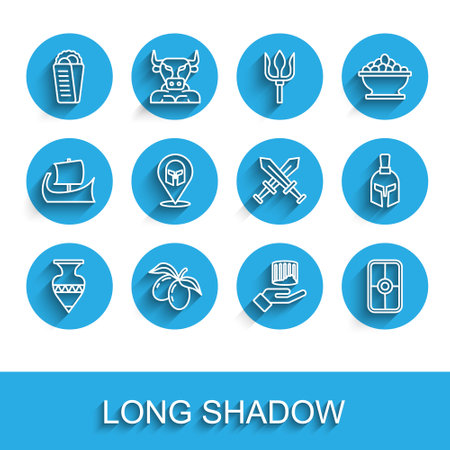Understanding British Folklore in the Home
British folklore weaves a rich tapestry of stories, rituals, and superstitions that have shaped the character and heart of homes across the United Kingdom. These traditions are not merely relics of the past; they continue to inform how many Britons create comfort, protection, and harmony in their living spaces today. At the heart of British domestic folklore lies an intricate web of symbolism—think horseshoes above doorways for luck, sprigs of rowan or holly to ward off evil, and even the careful placement of mirrors to deter unwanted spirits. Such practices often stem from a deep-seated respect for the unseen forces believed to influence everyday life.
Delving into these origins reveals how generations have fostered a connection between home and hearth, blending practicality with mysticism. From blessing new builds with bread and salt to celebrating seasonal changes with garlands and charms, each ritual carries cultural weight. The humble threshold is more than an entryway—it is a boundary where protective folklore thrives. Understanding this context provides a unique lens through which to view modern home design, especially when considering how these age-old customs can harmonise with other philosophies like Feng Shui. Exploring these traditions offers insight into the British approach to domestic well-being: an elegant balance between superstition, symbolism, and an enduring desire for sanctuary within one’s own four walls.
2. Introduction to Feng Shui Compass Techniques
Feng Shui, an ancient Chinese art, is all about harmonising individuals with their environment by optimising the flow of energy, or “Qi.” Central to traditional Feng Shui practice is the Luo Pan—a specialised compass designed not only for orientation but also for assessing how energy circulates through a home. Integrating these compass techniques into British homes, especially when blended with local folklore and cultural sensibilities, offers a unique approach to creating a balanced and uplifting living space.
The Luo Pan: More Than Just a Compass
Unlike a standard magnetic compass, the Luo Pan features concentric rings inscribed with Chinese characters and symbols, each corresponding to specific energies, elements, and directions. Its use goes beyond simple navigation—it deciphers how Qi enters and moves within your property, allowing you to strategically position key rooms or objects. In the British context, this can mean aligning cherished family heirlooms or folklore-inspired décor to optimise both tradition and well-being.
Key Components of the Luo Pan
| Ring Name | Purpose | Application in Home |
|---|---|---|
| Heaven Pool (Central Needle) | Determines precise direction | Aligns main entrance or focal points |
| Earth Plate | Represents the static earth element | Selects stable locations for heavy furniture or altars |
| Human Plate | Mediates between heaven and earth energies | Guides placement of personal spaces like bedrooms |
| Twelve Earthly Branches | Links to time cycles and animal signs | Incorporates seasonal changes or family traditions |
The Flow of Energy in British Homes
When using Feng Shui compass techniques within a British setting, special attention is paid to the interplay of natural light, heritage architecture, and local materials such as oak beams or stone fireplaces. The Luo Pan helps identify auspicious orientations for entryways or windows, ensuring that positive energy meanders gently—much like a country lane through an English village—rather than rushing straight through. This thoughtful alignment transforms any house into a haven where both modern comfort and folklore-inspired magic coexist in harmony.

3. Finding Common Ground: Parallels between Folklore and Feng Shui
At first glance, British folklore and Feng Shui compass techniques may seem worlds apart—one rooted in the misty woodlands of Albion, the other in ancient Eastern philosophy. Yet, a closer look reveals a tapestry of shared values, particularly in their deep reverence for nature and spatial harmony. Both traditions champion the idea that our surroundings possess powerful energies, shaping our lives in subtle but profound ways.
Respecting the Natural World
In British folklore, nature is alive with spirit and symbolism. The whispering willows, sacred yew trees, and mysterious stone circles are all imbued with stories and meanings that guide behaviour and respect for the land. Similarly, Feng Shui’s compass methods emphasise aligning one’s home with the natural landscape—considering hills, watercourses, prevailing winds, and sunlight to foster prosperity and wellbeing. This mutual appreciation for the environment underscores an understanding that harmony flows from respecting what surrounds us.
Spatial Awareness as Tradition
Both systems pay keen attention to how space is organised. British folk tales often recount dwellings designed to protect against wayward spirits or invite good fortune—think of horseshoes above doorways or placing Rowan branches to ward off mischief. In Feng Shui, careful orientation using the compass (luopan) ensures that rooms, entrances, and furniture placements support balanced energy flow (qi). The parallels are striking: both cultures recognise that how we shape our spaces can profoundly affect our mood, luck, and health.
Shared Values for Modern Living
These ancient practices converge around the principle of living in tune with nature’s rhythms and respecting the invisible currents that move through every home. Whether it’s through folklore-inspired charms or Feng Shui’s precise alignments, both offer wisdom for creating sanctuaries that nurture body and soul—a blend of British tradition and Eastern insight uniquely suited to modern UK homes seeking harmony and charm.
4. Practical Integration: Styling Your Home with Both Influences
Bringing together the rich tapestry of British folklore and the precise energy mapping of Feng Shui compasses creates a home that is not only visually captivating but also energetically balanced. Here’s a step-by-step approach to harmoniously style your living space, weaving in local traditions and directional wisdom.
Step 1: Identify Key Folklore Motifs and Materials
Begin by selecting elements from British folklore known for their protective or luck-bringing properties—think horseshoes, green man masks, or Celtic knots. Next, opt for materials traditionally used in British homes such as oak, wool, or local stone to root your décor in regional authenticity.
Step 2: Align with Feng Shui Compass Directions
With your chosen motifs and materials, consult the Feng Shui compass (luopan) to determine optimal spatial orientation. Each cardinal direction corresponds to a different aspect of life and energy flow:
| Direction | Feng Shui Element | Folklore Motif Suggestion |
|---|---|---|
| North | Water (Career & Wisdom) | Celtic water symbols or blue-dyed wool accents |
| East | Wood (Health & Family) | Oak furniture, Green Man carvings |
| South | Fire (Recognition & Passion) | Candle sconces, red tartan throws |
| West | Metal (Creativity & Children) | Pewter trinkets, horseshoes over doorways |
Step 3: Placement for Maximum Harmony
Arrange key folklore objects according to the compass readings. For example, place a horseshoe above a western-facing entrance to channel creativity and protection. Position oak furnishings in eastern spaces to nurture health and family bonds, while blue textiles in northern rooms can enhance calmness and clarity.
Tips for Seamless Blending
- Select a consistent colour palette inspired by the British countryside—sage greens, heather purples, and earthy browns—to tie folklore pieces and Feng Shui placements together.
- Avoid clutter; let each symbolic item breathe within its directional zone.
Your Home as a Living Story
This thoughtful integration transforms your interiors into an engaging narrative where every object holds both local significance and spatial intention. By balancing tradition with energy flow, you create a home that feels grounded, inviting, and uniquely harmonious.
5. Case Studies: British Homes Embracing East Meets West
Modern Victorian Terrace in London
In a bustling London neighbourhood, a Victorian terrace house becomes an exemplar of East meets West harmony. Here, the homeowner weaves Celtic folklore into the fabric of her living space—oak leaf motifs carved into fireplace mantels pay homage to the Green Man, while Feng Shui’s compass method determines the optimal orientation for restful sleep and prosperity. By positioning the bed in line with the Sheng Qi direction and featuring hand-painted panels with local mythological scenes, this home radiates both individuality and balanced flow.
Yorkshire Cottage with Fairy Magic
Nestled amidst rolling Yorkshire hills, a stone cottage celebrates British fairy lore alongside ancient Chinese geomancy. The entrance is adorned with horseshoes and sprigs of rowan for protection, echoing local tradition. Inside, the placement of furniture follows the Eight Mansions compass technique to support family unity and health. Soft pastel palettes and nature-inspired textiles evoke a sense of whimsy and lightness—a delightful fusion where every room tells a story of folklore and flow.
Bristol Georgian Flat with Contemporary Flair
A Georgian flat in Bristol showcases how urban dwellers can merge heritage and harmony. The owner curates a gallery wall that features Cornish pixie illustrations alongside calligraphy representing Feng Shui’s Five Elements. Using the Luo Pan compass, she aligns her creative studio to face Wen Chang, the academic star, fostering inspiration and productivity. This thoughtful blend creates a spirited home environment that feels grounded yet creatively unrestrained.
Celebrating Individuality through Design
Across these homes, what stands out is the celebration of personal identity through narrative-driven design choices. Each interior becomes a canvas where British folklore charms coexist with meticulous Feng Shui compass alignments—proving that harmony thrives when tradition and innovation walk hand in hand.
Inspiring Your Own Fusion Journey
These real-life case studies illustrate that blending British folklore with Feng Shui compass techniques is not only possible but deeply rewarding. Whether you cherish ancestral tales or seek energetic balance, your home can become a living story—one that honours the past while embracing new dimensions of well-being and beauty.
6. Tips for Creating Lasting Harmony
Mindful Placement: A Thoughtful Approach
Begin by considering the energy flow in each room, blending the ancient wisdom of the Feng Shui compass with the spirit of British folklore. Place cherished objects—like a horseshoe above the entrance or a Cornish pixie figurine on a sunny windowsill—in auspicious directions identified by your compass. These placements not only celebrate local tradition but also help attract positive qi, reinforcing feelings of safety and abundance.
Daily Rituals: Infusing Life with Meaning
Incorporate daily rituals that anchor you in both worlds. For instance, start mornings with a gentle bell chime—a nod to Celtic practices—while opening windows to refresh energy as recommended in Feng Shui. Evenings might include lighting a beeswax candle, drawing upon English heritage, placed intentionally in the southwest corner to nurture love and connection according to the Bagua map.
Respectful Layering of Traditions
Harmony is about respectful integration rather than mere juxtaposition. When layering traditions, let each element have space to breathe. For example, display an oak leaf (symbolising strength in British myth) near a water feature positioned in the north for career prosperity, as guided by Feng Shui. Allow folklore-inspired crafts or heirlooms to coexist with carefully selected colours and shapes that echo compass recommendations.
Sustaining Equilibrium
Regularly revisit your home’s arrangement as seasons change—a ritual deeply rooted in British custom and mirrored in Feng Shui’s attention to cycles. Cleanse spaces with natural methods such as burning sage or displaying fresh lavender bouquets, both believed to dispel negativity. Finally, invite family participation: sharing stories about the significance of each item or ritual helps reinforce connections between past and present, weaving a lasting tapestry of harmony unique to your home.

